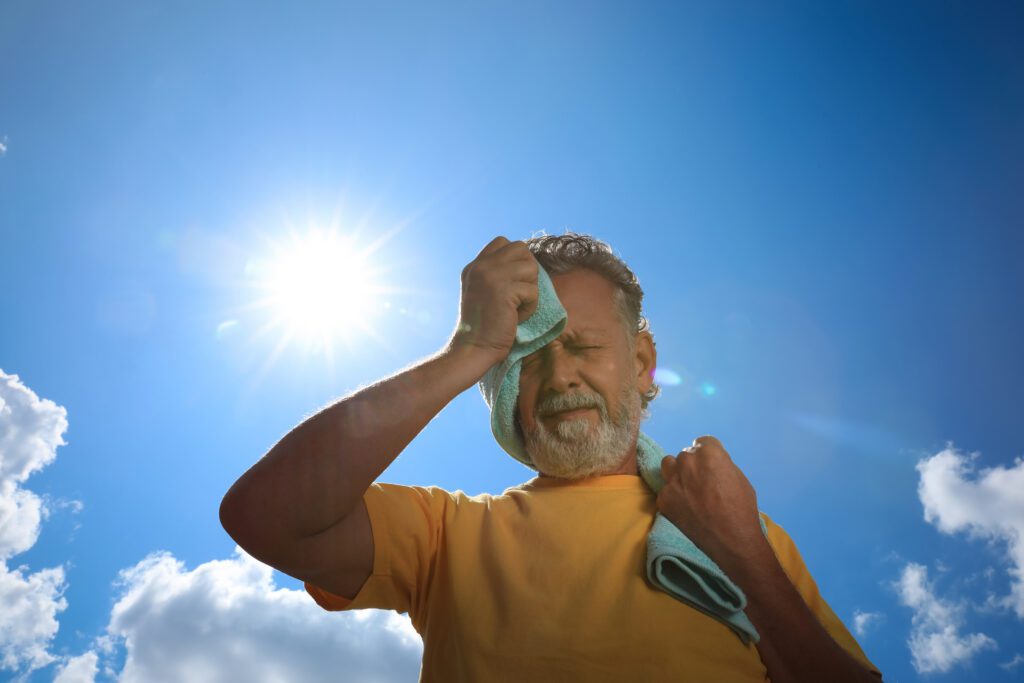by TERESA SCHIFFER
Sponsored by Central Florida Health Care
It’s summertime, and that means it’s time to get out and have some fun! It’s important to keep in mind that soaring temperatures here in Florida can lead to dangerous heat-related illnesses. Thankfully, if you know the symptoms to watch for, you can keep yourself and others safe. Central Florida Health Care APRN Karla Bonetti explains how to safely have fun in the sun.
“Let’s start with the definition of ‘heat-related illnesses,’ ” Bonetti begins. “Basically, those are illnesses caused by exposure to a prolonged amount of heat without relief or adequate hydration.”
The three types of heat-related illness are heat cramps, heat exhaustion, and heat stroke.
“Heat cramps are the mildest form of heat illness,” Bonetti says. “This involves painful muscle cramping and spasms that usually occur after intense or vigorous exercise, and usually outdoors where the person is exposed to extreme heat.”
Heat exhaustion is the next level up in severity. It can involve the same symptoms as heat cramps, but at this point the body has started to lose significant amounts of water and electrolytes. Additional symptoms may include tachycardia (a rapid, possibly irregular heartbeat), hypotension (a drop in blood pressure), extreme weakness, or fatigue.
Sweating is the body’s way of cooling itself through the evaporative cooling action of water on skin. Profuse sweating caused by overexposure to extreme heat can lead to dehydration, light-headedness, headaches, abdominal cramps, nausea, vomiting, and diarrhea.
The most severe form of heat-related illness is heat stroke.
“Heat stroke usually involves all the other symptoms that we’ve mentioned, but also symptoms related to the central nervous system — irritability, disorientation, headaches, confusion, and the worst symptoms that a person may have – coma or seizures.”
The severity of symptoms experienced by an individual in extreme heat is often dependent on how acclimated the person is to those temperature ranges. Since Florida is a popular destination for tourists from all over the world, we have many visitors who are not accustomed to the type of weather we experience here on a daily basis. These guests are at especially high risk of succumbing to a heat-related illness if appropriate precautions are not taken.
Prevention
Bonetti says the most important factor to staying safe in the heat is hydration.
“As we’re exposed to these very hot temperatures, our bodies try to compensate by evaporating the heat by sweating, and with the sweat we lose water,” she explains. “So take breaks to stay hydrated, especially those who work outdoors.”
Working outdoors can be particularly hazardous because physical activity can generate additional body heat, and workers can become so focused on completing tasks that they neglect their physical well-being.
“Also, it’s important to take breaks, especially in a cool area,” Bonetti advises.
“Take enough time to recover and rest.”
Clothing can also make a difference in how well you are able to tolerate the heat. Vacationers should be sure to bring suitable clothes for their Florida adventure.
“For people who come from out-of-state, it’s important to wear appropriate clothing in this type of weather,” she says. “It’s recommended that you wear light-colored, good-fitting, breathable clothing as much as possible. Wearing a hat may help, and sunglasses to protect yourself from the extreme heat and sun exposure.”
Above all else, pay attention to what your body is telling you and keep an eye on your friends and coworkers. At the first sign of dehydration or heat illness, take steps to cool down and rehydrate. Coconut water, watermelon, and pineapple are also great ways to hydrate and replenish electrolytes.
When in doubt as to the severity of your own or another person’s condition in the heat, be safe and call 911.
